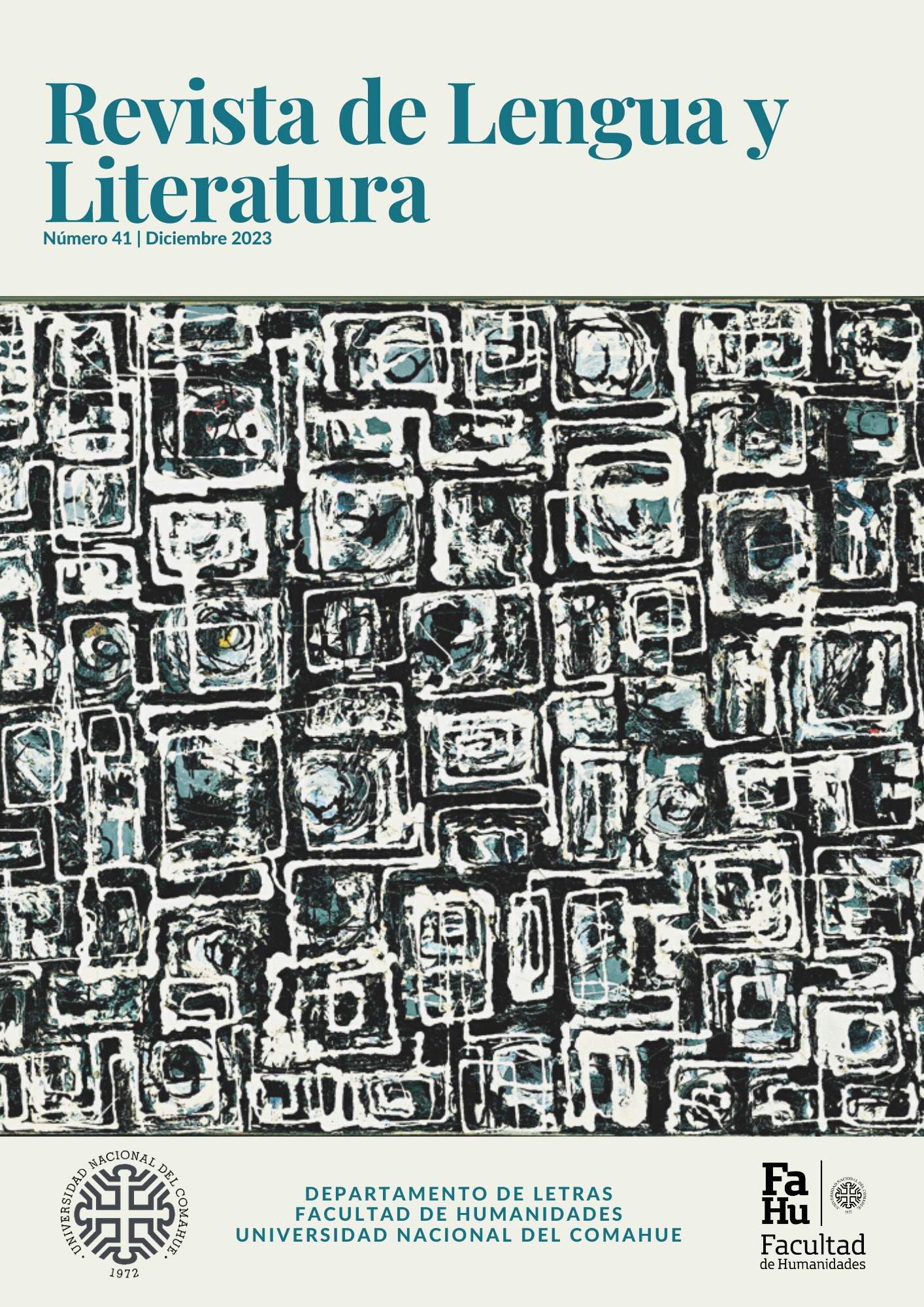A new approach to language change
Keywords:
Language change, Contention, Linear adjacency, ReanalysisAbstract
Approaches to language change within current Generative Grammar recognize that there is a
clear relationship between diachronic variation and synchronic variation. However, specific
definitions such as reanalysis, grammaticalization or lexicalization are used to account for
changes over time. In these pages, I try to pursue the idea that we are dealing with linguistic
variation in any case, and that if we revisit language change from late insertion models and recover
other generalizations about the properties of natural languages, it is possible, at least, to question
the need for specific mechanisms of change. This article is a preliminary presentation of a
proposal that should be applied to many more phenomena than those addressed in these pages and
revised in the light of the results. Still, we understand that many of the linkages that we have
established in this paper are not only possible, but also desirable
Downloads
References
Abney, S. (1987). The English noun phrase in its sentential aspect. Tesis de doctorado, MIT.
Andersen, H. (1973). Abductive and Deductive Change. Language 49, 765–93.
Andersen, H. (2017). Abduction. En A. Ledgeway & I. Roberts (eds.), The Cambridge Handbook of Historical Syntax (301-321). Cambridge University Press.
Baker, M. (2008). The macroparameter in a microparametric world. En T. Biberauer (ed.), The Limits of Syntactic Variation (351-373). Amsterdam: John Benjamins.
Bobaljik, J. (2012). Universals in comparative morphology. Suppletion, Superlatives, and the Structure of Words. Cambridge: MIT Press.
Borer, H. (1984). Parametric Syntax. Dordrecht: Foris.
Caha, P. (2016). GEN.SG = NOM.PL: A mystery solved? Linguistica Brunensia. 64 (1), 25-40. https://digilib.phil.muni.cz/node/27528
Chomsky, N. (1965). Aspects of the theory of syntax. Cambridge, Mass.: The MIT Press.
Chomsky, N. (1981). Lectures on Government and Binding. Dordrecht: Foris.
Chomsky, N. (1993). A Minimalist Program for Linguistic Theory. En H. Kenneth & S. Keyser (eds.), The View from Building 20: Essays in Linguistics in Honor of Sylvain Bromberger (1- 52). Cambridge, Mass.: MIT Press.
Chomsky, N. (1995). The Minimalist Program. Cambridge, Mass.: MIT Press.
Colantoni, L. & M. C. Cuervo. (2013). Clíticos acentuados. En L. Colantoni & C. Rodríguez Louro (eds.), Perspectivas teóricas y experimentales sobre el español de la Argentina (143- 158). Madrid: Iberoamericana, Vervuert.
Di Tullio, A. & L. Kornfeld. (2013). Cuantificadores gramaticalizados del registro coloquial. En A. Di Tullio (coord.), El español de la Argentina. Estudios gramaticales (105-127). Buenos Aires: Eudeba.
Halle, M. & A. Marantz. (1993). Distributed morphology and the pieces of inflection. En K. Hale & S. Keyser (eds.), The View from Building 20. (111-176). Cambridge, Mass.: MIT Press.
Harris, A. & L. Campbell. (1995). Historical syntax in cross-linguistic perspective. Cambridge: Cambridge University Press.
Harris, J. & M. Halle. (2005). Unexpected Plural Inflections in Spanish: Reduplication and Metathesis. Linguistic Inquiry, 36 (2), 195 -222.
Haspelmath, M. (1998) Does grammaticalization need reanalysis? Studies in Language 22 (2), 315-351.
Hopper, P. & E. Traugott. (2003). Grammaticalization. Cambridge University Press.
Kayne, R. (1994). The Antisymmetry of Syntax. Cambridge, Massachusetts: The MIT Press.
Kornfeld, L. (2014). Lecturas alternativas del futuro. Usos y significados de la perífrasis ir a + infinitivo. Traslaciones. Revista latinoamericana de lectura y escritura 1(1), 8–29.
Kornfeld, L. (2016). Dale nomás… Misterios y revelaciones de un clásico argentino. Filología XLVI. Instituto de Filología, 33-55.
Kroch, A. (2001). Syntactic change. En M. Baltin & C. Collins (eds.), The Handbook of Contemporary Syntactic Theory (629- 739). Oxford: Blackwell.
Kuriłowicz, J. (1976 [1965]). The evolution of grammatical categories. Reimpreso en Kuriłowicz, J. Esquisses linguistiques, vol. 2 (38- 54). Munich: Fink.
Langacker, R. (1977). Syntactic Reanalysis. En Ch. Li (ed.), Mechanisms of syntactic change (57- 139). Austin: Texas University Press.
Ledgeway, A. (2012). From Latin to Romance. Morphosyntactic Typology and Change. Oxford University Press.
Lehmann, C. (2015). Thoughts on grammaticalization. Berlin: Language Science Press.
Madariaga, N. (2017). Reanalysis. En A. Ledgeway & I. Roberts (eds.), The Cambridge Handbook of Historical Syntax (70- 91). Cambridge University Press.
Mare, M. (2021). Syncretism of plural forms in Spanish Dialects. The Linguistic Review 38(2), 289-314.
Meillet, A. (1958 [1912]). L’e´volution des formes grammaticales. En A. Meillet (ed.), Linguistique Historique et Linguistique Generale (130 -158). Paris: Champion.
Mendívil Giró, J.L. (2015). El cambio lingüístico. Sus causas, mecanismos y consecuencias. Madrid: Síntesis.
Roberts, I. & A. Roussou. (2003). Syntactic Change: A Minimalist Approach to Grammaticalization. Cambridge, Inglaterra: Cambridge University Press.
Roberts, I. (2007). Diachronic Syntax. Oxford: Oxford University Press.
Starke, M. (2009). Nanosyntax: A short primer to a new approach to language. Nordlyd 36, 1-6.
Downloads
Published
How to Cite
Issue
Section
License
Copyright (c) 2023 Revista de Lengua y LiteraturaLa aceptación de colaboraciones por parte de la revista implica la cesión no exclusiva de los derechos patrimoniales de los autores a favor del editor, quien permite la reutilización bajo Licencia Atribución-NoComercial-SinDerivadas 2.5 Argentina (CC BY-NC-ND 2.5 AR)
Usted es libre de:
Compartir — copiar y redistribuir el material en cualquier medio o formato
La licenciante no puede revocar estas libertades en tanto usted siga los términos de la licencia
Bajo los siguientes términos:
Atribución — Usted debe dar crédito de manera adecuada, brindar un enlace a la licencia, e indicar si se han realizado cambios. Puede hacerlo en cualquier forma razonable, pero no de forma tal que sugiera que usted o su uso tienen el apoyo de la licenciante.
NoComercial — Usted no puede hacer uso del material con propósitos comerciales.
SinDerivadas — Si remezcla, transforma o crea a partir
El simple hecho de cambiar el formato nunca genera una obra derivada, no podrá distribuir el material modificado.
No hay restricciones adicionales — No puede aplicar términos legales ni medidas tecnológicas que restrinjan legalmente a otras a hacer cualquier uso permitido por la licencia.





